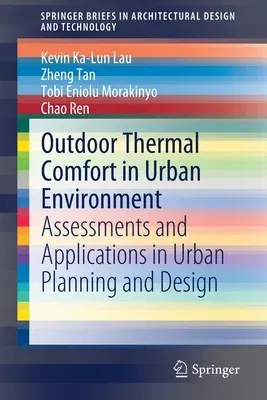Kevin Ka-Lun Lau
(Author)Outdoor Thermal Comfort in Urban Environment: Assessments and Applications in Urban Planning and Design (2022)Paperback - 2022, 17 September 2021

Qty
1
Turbo
Ships in 2 - 3 days
In Stock
Free Delivery
Cash on Delivery
15 Days
Free Returns
Secure Checkout

Part of Series
Springerbriefs in Architectural Design and Technology
Print Length
142 pages
Language
English
Publisher
Springer
Date Published
17 Sep 2021
ISBN-10
9811652449
ISBN-13
9789811652448
Description
Product Details
Book Edition:
2022
Book Format:
Paperback
Country of Origin:
NL
Date Published:
17 September 2021
Dimensions:
23.39 x
15.6 x
0.86 cm
ISBN-10:
9811652449
ISBN-13:
9789811652448
Language:
English
Location:
Singapore
Pages:
142
Publisher:
Weight:
231.33 gm